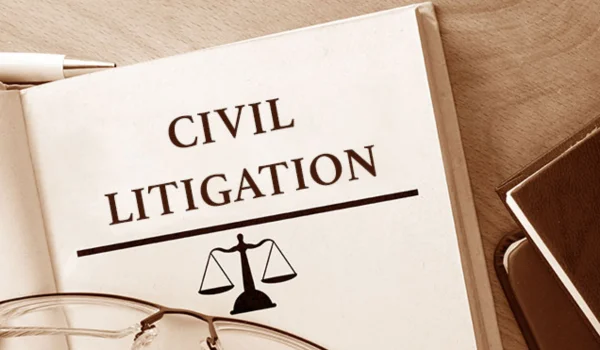Disputes are an inevitable part of life — and especially so in the business world. Whether it’s a disagreement over a contract, property rights, workplace conflict, or personal grievances, knowing how to respond legally is crucial. That’s where civil litigation and dispute resolution come into play.
But navigating these legal matters is no small task. Most individuals and businesses struggle to understand their rights, options, and the legal pathways available. That’s exactly what Law Scroller aims to solve. Their comprehensive section on Civil Litigation & Dispute Resolution simplifies complex legal concepts and guides users through the process of handling disputes professionally and efficiently.
In this article, we’ll explore the essentials of civil litigation, alternative dispute resolution methods, and how Law Scroller can help you make informed legal decisions — whether you’re a business owner, professional, or private individual.
What Is Civil Litigation?
Civil litigation refers to a legal process where two or more parties seek resolution to a non-criminal dispute through the court system. The purpose is to obtain compensation or some form of legal remedy for harm suffered, usually in the form of monetary damages or enforcement of a right.

Unlike criminal law — which is prosecuted by the government — civil litigation typically involves:
- Individuals
- Businesses
- Organizations
- Government bodies (in a non-criminal context)
Common types of civil litigation cases include:
- Breach of contract
- Property disputes
- Employment issues
- Intellectual property infringement
- Personal injury claims
- Business torts
- Defamation and privacy violations
According to Law Scroller, the civil litigation process can be both complex and time-consuming — but also necessary when disputes cannot be resolved informally.
The Civil Litigation Process Explained
The Civil Litigation & Dispute Resolution page on Law Scroller provides a clear breakdown of the typical litigation process:
| Stage | Description |
|---|---|
| Pleadings | Filing of complaint by the plaintiff and response from the defendant |
| Discovery | Exchange of relevant documents and evidence between both parties |
| Pre-Trial Motions | Legal motions to shape the trial or resolve it early |
| Trial | Formal court hearing where each side presents their case to a judge or jury |
| Post-Trial | Enforcement of judgment or appeal if necessary |
Law Scroller makes these steps digestible for non-lawyers, helping users understand timelines, requirements, and strategies involved in taking a case to court.
When Should You Consider Litigation?
Litigation is often a last resort, but sometimes it’s the only way to resolve a serious conflict. You should consider litigation when:
- A contract has been clearly breached
- Attempts at informal resolution have failed
- Substantial damages have been incurred
- There is a need for legal precedent or injunctive relief
- The opposing party refuses to negotiate in good faith
Law Scroller emphasizes that every case is different, and a thorough legal analysis is critical before filing a lawsuit.
Dispute Resolution: The Smarter, Faster Alternative?
While litigation is necessary in many situations, it’s not always the best first step. That’s why dispute resolution — often referred to as Alternative Dispute Resolution (ADR) — has become increasingly popular.
Law Scroller explains the three main types of ADR in its Civil Litigation & Dispute Resolution guide:
✔ Mediation
A neutral third party facilitates discussion between disputing parties to help them reach a voluntary agreement. This is commonly used in family law, employment disputes, and contract disagreements.
✔ Arbitration
An arbitrator (or panel) hears arguments and makes a decision that may be legally binding. Arbitration is common in commercial disputes and often written into business contracts.
✔ Negotiation
The simplest form of dispute resolution, where both parties directly communicate (often through lawyers) to reach a settlement.
Benefits of Dispute Resolution
According to Law Scroller, there are several compelling reasons why individuals and businesses often prefer ADR over litigation:
- ✅ Lower legal costs
- ✅ Faster resolution time
- ✅ Private and confidential process
- ✅ Less adversarial, preserving relationships
- ✅ Greater control over outcomes
These methods are especially beneficial for small businesses, startups, or individuals looking to avoid long-term courtroom battles.
A Real-World Example: A Business Partnership Dispute
Consider two business partners who disagree over profit sharing and business direction. Things escalate to the point where both are considering legal action.
- If they opt for mediation, they may come to an amicable solution without ending the partnership.
- If they choose arbitration, an expert arbitrator can decide on a binding agreement based on their contract.
- If neither works, the matter may move to civil litigation, where a judge decides their financial and legal rights.
Law Scroller walks readers through these scenarios, offering practical insights for making the right call.
When You Need Litigation AND ADR
Sometimes, a combination approach is best. For example:
- Begin with negotiation, to gauge the other party’s willingness to compromise.
- Move to mediation, to settle complex emotional or personal elements.
- Use litigation as a final step to enforce your rights if all else fails.
The flexibility and strategy behind dispute resolution are clearly explained in Law Scroller, which helps users decide which path aligns best with their goals.
Why Law Scroller Is a Trusted Legal Resource
Legal websites can be filled with jargon or overly promotional content — but Law Scroller is different. Here’s why it stands out:
- ✅ Education-focused — no sales pitches, just clear guidance
- ✅ U.S.-centric — designed specifically for American law users
- ✅ Free and accessible — legal literacy without the cost barrier
- ✅ Covers both litigation and alternatives — empowering users with choice
The Civil Litigation & Dispute Resolution page acts as both a primer and a strategic resource for navigating legal conflict with confidence.
Quick Legal Tips from Law Scroller’s Civil Litigation Section
| Tip | Why It Matters |
|---|---|
| Read every contract thoroughly | Many disputes stem from vague or unfair contract terms |
| Keep all documentation | Emails, invoices, and contracts can be key evidence in court |
| Don’t delay seeking legal help | Statutes of limitation may block your case if you wait too long |
| Consider mediation before going to court | It’s faster, cheaper, and often more productive |
| Know your end goal | Are you seeking justice, money, or resolution? Know what matters |
Final Thoughts: Resolve the Right Way with Law Scroller
Whether you’re in the middle of a business disagreement, preparing to sue for breach of contract, or simply want to understand your legal rights — the path to resolution starts with education.
Thanks to platforms like Law Scroller, everyday users now have access to expert-level legal knowledge. Their Civil Litigation & Dispute Resolution section empowers individuals, entrepreneurs, and professionals to make smart, confident decisions during one of the most stressful events in life: a legal dispute.
Litigation may be the battlefield, but understanding your options is your best armor. Start with Law Scroller — and resolve your conflicts the right way.

Hello, I’m Kapil Kumar, a seasoned SEO expert and blogger at WinnersList.in. My mission is to spotlight exceptional individuals and organizations across various domains. Through curated lists, profiles, and inspiring stories, I aim to celebrate outstanding achievements and inspire the next generation of champions. Join me in this journey.
